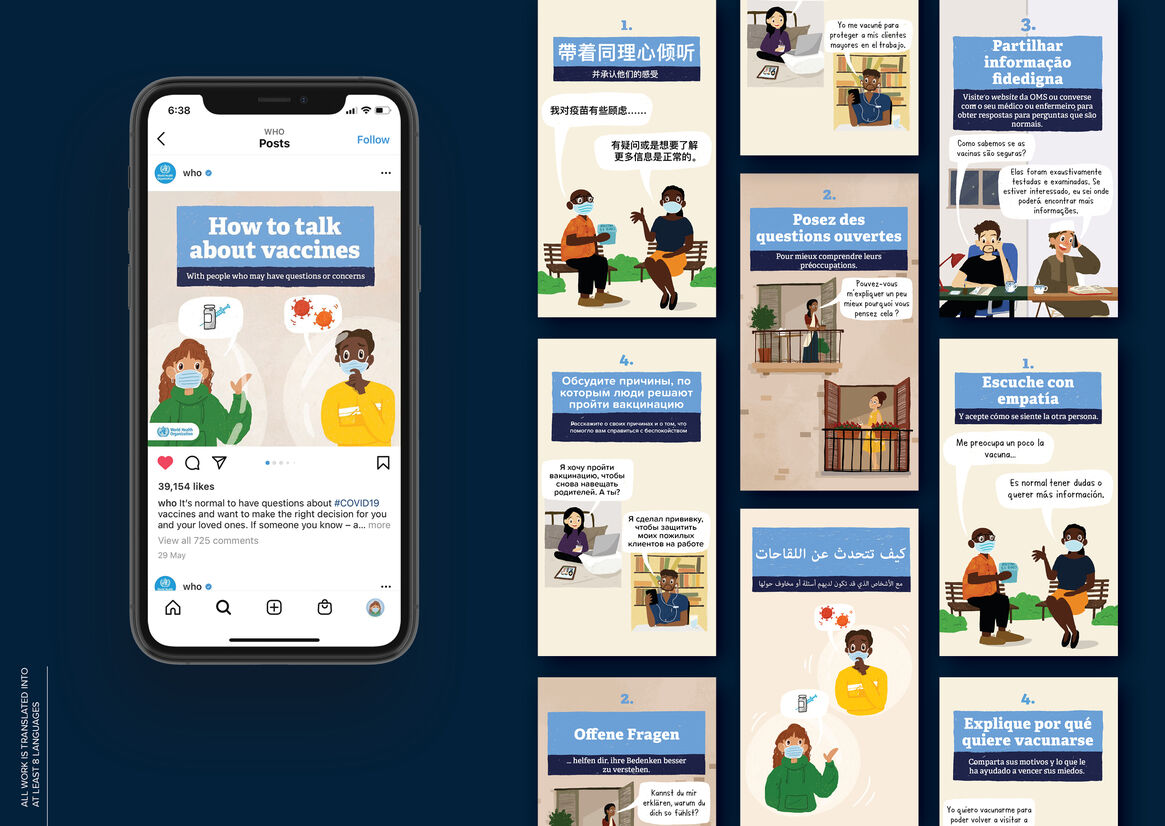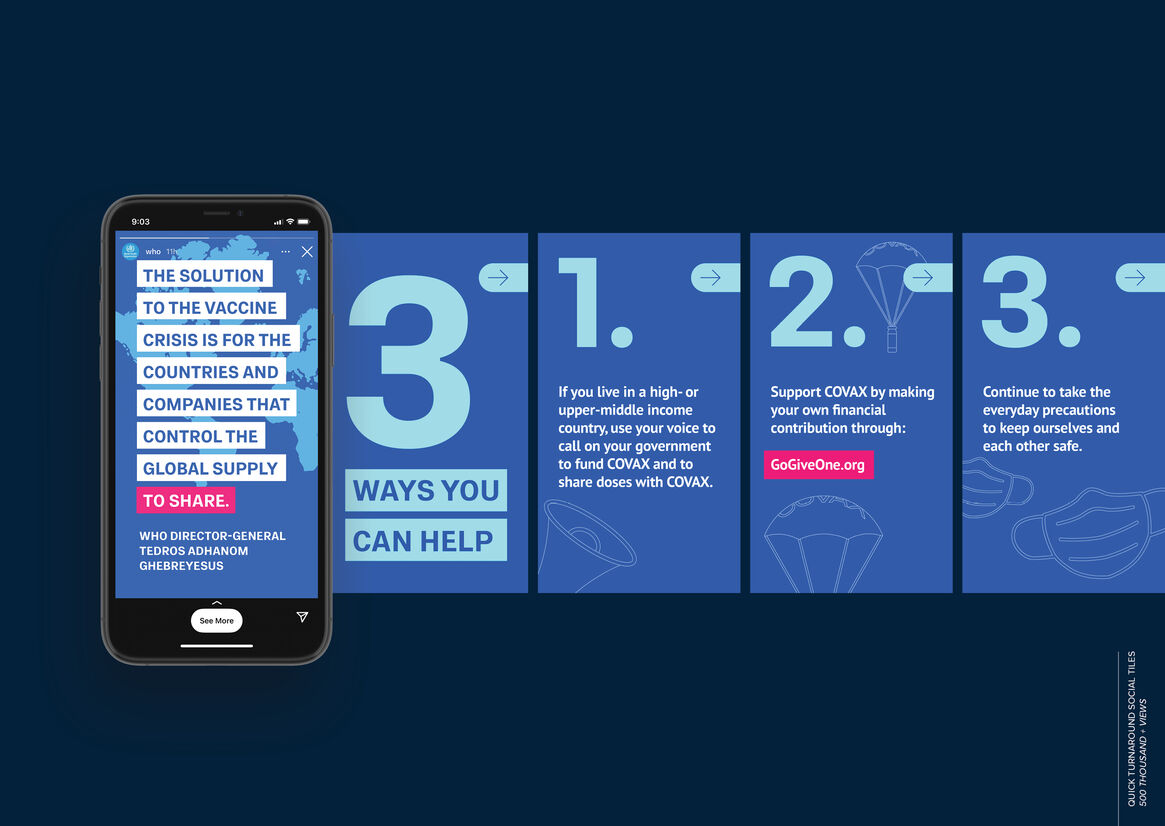Credits
-
Pou Auaha / Creative Director
Toby Morris
-
Ngā Kaimahi / Team Members
Lee Lowndes, Duncan Greive, Jess Milne, Kristen Bourchier Morris, Ezra Whittaker, Lauren Stewart, Sepi Sadeghi, Claire Choe, Isaiah Tour, Joe Canham, Madeleine Chapman, Vanessa Manhire -
Kaitautoko / Contributors
Bonnie Wong, SiewWee Hng, William Kusuma, Renée Jacobi, Julia Murray, Natasha Vermeulen, Rob Wallace, Rina Diane Caballar, Harkanwal Singh, Vania Chandrawidjaja, Jared Yearsley, Reuben Boey
-
Client
World Health Organisation










Description:
Historically, the World Health Organisation have been experts at communicating with governments, international health departments and medical communities.
But, when the first global pandemic of the social media era imploded, suddenly the general public came looking to them for answers, too.
In the heat and epicentre of one of the world’s largest humanitarian crises to date, the WHO turned to us: a small-but-growing creative studio in the South Pacific to communicate back to the world some of their most critical messaging to date.
Within days, our small, locked down team in New Zealand assembled and began creating outputs immediately for the largest audience imaginable: the world.
The challenges went over and beyond the usual creative brief; not only was the information complex, and constantly evolving, but it was incredibly urgent. This was no retail Christmas campaign - lives were at stake. And it wasn’t going to end any time soon.
On top of this, the work needed to be produced quickly, with scientific accuracy, and speak to a global audience that could be translated into eight languages. We were also battling large-scale misinformation and a stressed out, overloaded audience. We had to take a design-led approach, and use our illustration prowess to break down complex information into clear and easy to understand messages.
Our creative approach centred on two important factors; clarity and humanity. This meant stripping away unimportant visual information and concentrating on creating clear, accessible content that could be understood quickly by anyone, anywhere with no room for misinterpretation.
Secondly, focussing on the human element reminded us to keep people at the heart of the work. We needed to communicate not just the facts, but also why they mattered, and what they meant for the reader.
Over months, the relationship grew as the aggression of the pandemic ramped up and demand for our unique way of communicating it exploded.
We graduated from writing and illustrating in-depth articles, into more detailed films and infographics explaining the statistics and science, to creating printed information packs for healthcare workers, to a series of short vaccine education videos in collaboration with Facebook that were viewed by over 500 million people.
This project has, at times, felt surreal. Here we were, a small, independent studio in New Zealand, making content for the epicentre of one of the world’s most significant moments in history. To be able to use the skills we have as designers, illustrators, writers and animators to help out in a global crisis is a true honour and life-changing experience.